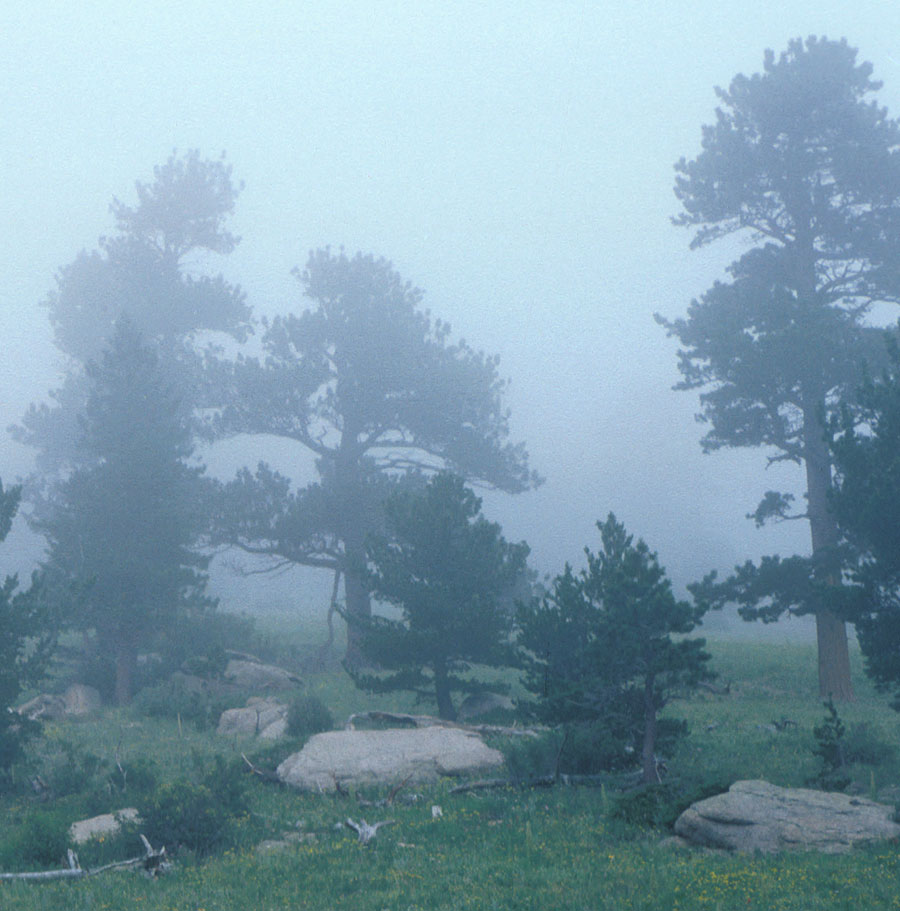Humidity
Fog forms when cooler temperatures cause water vapor to condense to droplets of liquid water.
Credit: UCAR
Some people describe humid weather as muggy. When the air is humid, it has more water vapor, or water in the form of a gas, than dry air has. Looking at all the gases in the atmosphere, water vapor occurs in only trace amounts, making up an average of 1% to about 4% of the total volume. Still, water vapor plays an outsized role in our weather and climate. Almost half of Earth’s water vapor exists within the lowest ~5 km of the atmosphere, where it can condense to form clouds and fuel storms. Water vapor is an important part of the water cycle, which describes how water moves through its three phases – gas (water vapor), liquid, and solid (ice or snow) – within the Earth system.
How Much Water Vapor Can Be in the Air?
You might have noticed how temperature affects humidity by observing how liquid water changes to water vapor and back again in your bathroom. As you run hot water in a shower, some of the liquid water evaporates, becoming water vapor, the air in the room warms, and humidity increases. But the surface of a mirror remains cooler, so water vapor condenses back into liquid water on the mirror. In both your bathroom and Earth’s atmosphere, the maximum amount of water vapor that can be present in the air depends on temperature.

Water vapor condenses to liquid water when it comes into contact with the cooler surface of the mirror.
UCAR
In warmer air, more water molecules evaporate, turning from a liquid into water vapor. This means that at warmer temperatures, there can be more molecules of water vapor in the air. That’s why the muggiest days, when humidity is highest, usually happen at the height of summer heat. But as the temperature goes down, more water molecules condense to liquid water and there is less water vapor in the air.
Absolute vs. Relative Humidity
The amount of water vapor in the air is called absolute humidity. The amount of water vapor in the air as compared with the amount of water that can be present in the air at that temperature is called relative humidity. For example, if you measure that there is half a gram of water vapor for each cubic yard of air, and there could be a maximum of 1 gram of water for each cubic yard of air, then the relative humidity is 50%.
Why are there water droplets on the grass on a cool summer morning, even though it did not rain the night before? The water most likely came from water vapor, which formed liquid water droplets, just like when the water condensed on your bathroom mirror. This process happens when air reaches the dew point, which is the temperature when water will start to condense out of the air. When air is saturated as much as possible with water vapor it is at the dew point.
Calculate Relative Humidity
Most weather forecasts you see refer to relative humidity, so it’s useful to know how this value is computed. On a warm 76°F day, you measure that there is half a gram of vapor for each cubic yard of air. At that temperature, there can be a maximum of 1 gram of water for each cubic yard of air before condensation begins. What is the relative humidity?
Divide the amount of vapor in the air (0.5 grams) by the total amount of water vapor that could be present at that temperature (1 gram). Then, multiply by 100 to figure out relative humidity as a percentage. What value did you get? If you calculated that the relative humidity is 50%, you are correct.
